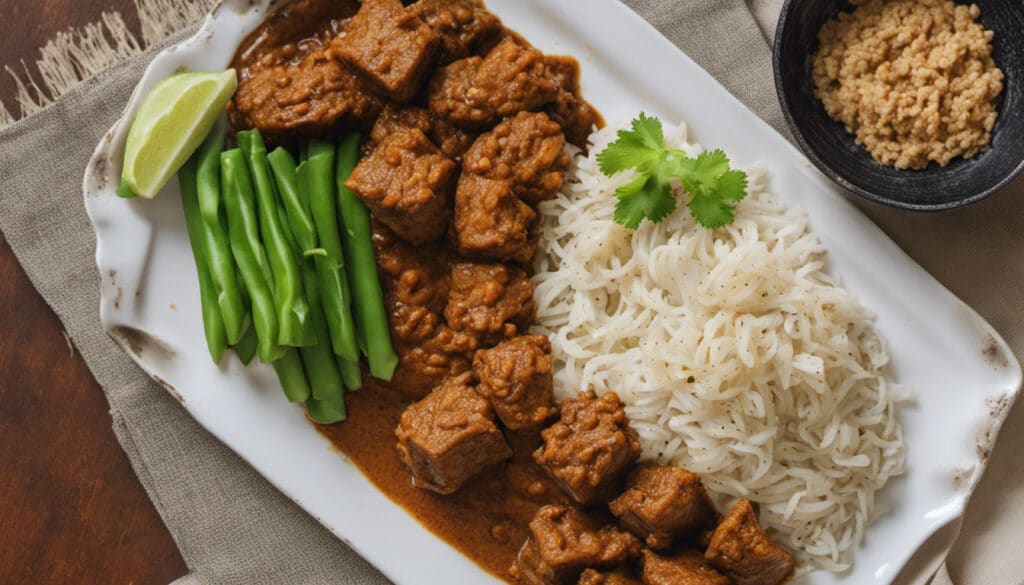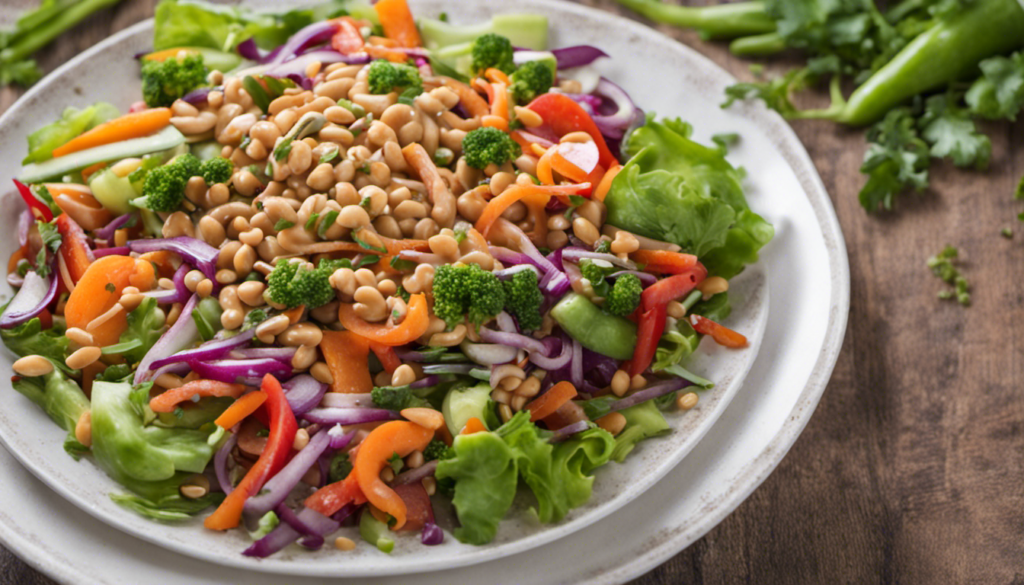| Prep: 15 mins | Cook: 35 mins | Difficulty: Easy | Serves: 6 |
| kcal | fat | saturates | carbs |
| 200 | 15g | 12g | 10g |
| sugars | fibre | protein | salt |
| 5g | 3g | 6g | 0.8g |
Why I Love Malaysian Sayur Lodeh
When it comes to the aromatic and richly textured world of Southeast Asian cuisine, Sayur Lodeh is a dish that I simply cannot get enough of. Growing up in Portland, Maine, my culinary experiences were primarily focused on the Atlantic staples like lobster rolls and clam chowder, but my palate has since voyaged far beyond those shores. This Malaysian vegetable coconut stew, Sayur Lodeh, is a delightful excursion into tropical flavors that are both comforting and exotic.
A Melody of Flavors and Textures
What draws me most to Sayur Lodeh is the harmonious blend of simple, fresh vegetables with the complex notes of kaffir lime leaves, lemongrass, and galangal. Each ingredient adds its own unique character. The creaminess of coconut milk balances perfectly with the earthiness of turmeric and the subtle heat from dried chilies. My children, Erin and Samantha, are often my taste-testers, and they love the mix of soft and crunchy textures from the tofu and vegetables.
The way this recipe integrates multi-layered flavors while remaining refreshingly light makes it quite similar to Thai green curry, yet it boasts a personality all its own. Adding fried tofu introduces a satisfying bite to the dish, making it a hearty option for vegetarians. For inspiration, I often look to renowned chef Chef Iriana Ida Bagus, whose interpretations of traditional Southeast Asian dishes always bring new ideas to my kitchen.
A Versatile Delight
Sayur Lodeh is an amazingly versatile dish. It can be enjoyed as a main course over a bed of steamed jasmine rice or served as a side dish accompanying a grilled chicken marinated in pandan and coconut. The stew’s broth-like consistency also makes it an excellent candidate for pairing with crusty bread, much like how one might enjoy a bowl of minestrone or French onion soup.
Although my primary expertise may lie in New England’s coastal cuisine, exploring dishes like Sayur Lodeh has been an exhilarating gastronomic journey. The medley of ingredients from green beans to kaffir lime leaves not only makes this recipe nutritious but also a celebration of colors and textures. Each spoonful is a delightful reminder of why I fell in love with cooking in the first place.
What You’ll Need
- 1 1/2 cups coconut milk
- 3 cups water
- 2 cups green beans, trimmed and cut into 2-inch pieces
- 2 cups cabbage, chopped
- 1 cup carrots, sliced
- 1 cup eggplant, cubed
- 1 cup tofu, cubed and fried
- 3 kaffir lime leaves, torn
- 2 stalks lemongrass, smashed
- 1 tablespoon vegetable oil
- 1-inch piece galangal, sliced
- 1 teaspoon turmeric powder
- 1 teaspoon salt
- 1 tablespoon sugar
- 4 cloves garlic, minced
- 2 shallots, minced
- 5 dried chilies, soaked and deseeded
Method
Step One
Heat the vegetable oil in a large pot over medium heat. Add the minced garlic, minced shallots, and soaked, deseeded dried chilies. Sauté until fragrant, about 2-3 minutes.
Step Two
Add the sliced galangal, turmeric powder, and kaffir lime leaves to the pot. Continue to sauté for another 2 minutes.
Step Three
Pour in the coconut milk and water, stirring to combine. Add the smashed lemongrass stalks.
Step Four
Bring the mixture to a gentle simmer. Add the green beans, cabbage, carrots, and eggplant. Cook for 10-15 minutes, until the vegetables are tender.
Step Five
Stir in the cubed and fried tofu. Season with salt and sugar. Adjust seasoning to taste.
Step Six
Let the Sayur Lodeh simmer for another 5 minutes to allow the flavors to meld. Remove the lemongrass stalks and kaffir lime leaves before serving.
Step Seven
Serve the Sayur Lodeh hot, preferably with steamed rice. Enjoy!




